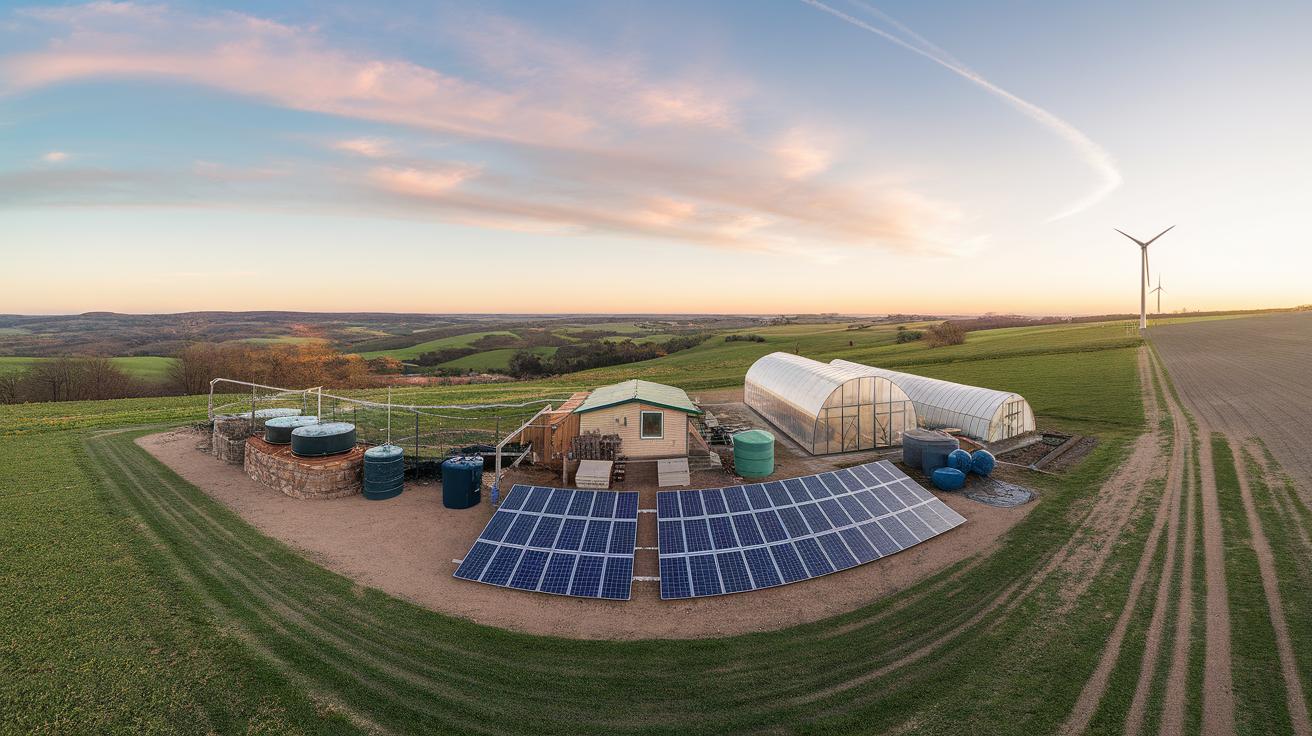Introduction
The movement toward eco-friendly practices is gaining momentum as individuals and communities recognize the importance of sustainability. With increasing awareness of environmental issues, many people are eager to transform their lifestyles to be more eco-conscious. This article delves into various strategies and practices for incorporating eco-friendly habits into daily life. By making simple yet impactful changes, individuals can contribute to a healthier planet.
Understanding eco-friendly practices involves recognizing the interconnectedness of human actions and the environment. From reducing our carbon footprint to choosing sustainable products, these practices play a significant role in protecting our natural resources. This article will explore essential eco-friendly concepts, practical tips for sustainable living, and the importance of making informed choices to reduce our ecological impact. Readers will find actionable insights to begin their transformational journey toward a more sustainable lifestyle.
Understanding Eco Friendly Concepts

Defining Sustainability
Eco-friendly practices focus on protecting the environment while promoting a healthier lifestyle. Sustainability means using resources wisely so future generations can enjoy them too. Simple actions like recycling, conserving water, and using energy-efficient appliances can make a big difference. These small steps add up to significant changes over time, showing how our choices impact the planet.
The Importance of Eco-Friendly Actions
Living sustainably helps reduce pollution and conserve natural resources. When people choose eco-friendly products, they support companies that prioritize the environment. This demand encourages businesses to innovate and find greener solutions. Educating ourselves about eco-friendly practices empowers us to live in harmony with nature. Knowing the importance of sustainability can inspire others to change their habits, creating a ripple effect that contributes positively to the planet.
The Impact of Our Choices

Every choice we make affects the environment in some way. Daily actions, like driving cars, using electricity, or selecting foods, contribute to our carbon footprints. A carbon footprint measures the total greenhouse gases produced by our activities. For example, choosing to walk or bike instead of driving reduces emissions and minimizes personal carbon footprints.
Ecological footprints extend this idea, evaluating how much nature we use to meet our needs. Each product we purchase has an ecological cost, requiring resources from the Earth. Making mindful choices, such as buying local or seasonal products, helps reduce these footprints. Understanding the impact of our decisions nudges us toward a more sustainable lifestyle, benefiting our planet and future generations.
The Impact of Our Choices Carbon Footprints and Ecological Footprints

The Power of Daily Choices
Every choice we make has a direct impact on the environment. Simple actions like driving a car or using disposable plastic contribute to larger problems like climate change. Every mile we drive increases our carbon footprint, which measures greenhouse gas emissions. These emissions trap heat in the atmosphere, leading to global warming. Reducing our carbon footprint begins with thinking before acting. For instance, walking or biking for short trips can significantly cut down on emissions.
Understanding Ecological Footprints
Your ecological footprint reflects how much nature you use for resources and waste. This number considers food, energy, and water consumption, as well as the waste produced. Opting for locally sourced foods, reducing meat consumption, and recycling can lower your ecological footprint. Making eco-friendly choices not only benefits the environment; it also encourages others to follow suit. When people see how easy and impactful these decisions are, they may feel inspired to change their habits. By understanding the significance of our choices, we can build a more sustainable future.
Sustainable Living at Home

Practical Eco-Friendly Practices
Transforming your home to support sustainability starts with small, manageable changes. Begin by adopting energy-efficient appliances. These devices consume less electricity and lower your utility bills. Switching to LED bulbs reduces energy use and lasts longer, making it a smart choice.
Next, reduce water waste by installing aerators on faucets and using water-saving showerheads. Collect rainwater in barrels for outdoor use, which promotes conservation. Composting kitchen scraps can significantly lower your waste while enriching garden soil. Use reusable bags, containers, and utensils to cut down on single-use plastics.
Encouraging children to recycle and educate them about eco-friendly practices instills these values for life. Even simple acts, like growing a small herb garden, promote sustainability while providing fresh ingredients. Adopting these practices creates a more sustainable home and positively impacts the environment.
Eco Friendly Transportation Options Embrace Sustainable Methods

Sustainable Transportation Choices
Many transportation options help reduce reliance on fossil fuels. Walking remains the simplest choice. It costs nothing, keeps you fit, and benefits the environment. Biking offers a great mix of exercise and eco-friendliness. With a bike, you travel faster than on foot while still being environmentally responsible.
Using Public Transport and Car Alternatives
Public transportation systems, like buses and trains, help cut down on the number of cars on the road. When you take public transit, you share your ride with many others, resulting in fewer emissions. Carpooling also lowers your carbon footprint by allowing multiple people to share a single vehicle. For those needing a more flexible option, electric scooters and ride-sharing apps provide eco-friendly alternatives. These methods benefit you and the planet by using less energy and producing fewer pollutants.
Sustainable Food Choices Examine How Food Choices Impact the Environment

Sustainable Food Choices Can Make a Difference
People often overlook how our food choices affect the planet. Raising animals for meat requires more land, water, and energy than growing plants. Livestock farming contributes to greenhouse gas emissions greatly. By reducing meat consumption, individuals can lessen their carbon footprint. Choosing local and seasonal foods also helps because it reduces transportation emissions. These choices support local farmers and create a stronger community.
Making More Sustainable Decisions in Food
Buying organic products often means using fewer chemicals that can harm the environment. Shopping at farmers’ markets offers fresh produce while helping local economies. Starting a vegetable garden adds another layer of sustainability, as it provides fresh food right at home. Adopting a plant-based diet can be a powerful way to promote sustainability. Each meal becomes an opportunity to support the Earth by making eco-friendly choices.
Water Conservation Techniques Embrace Sustainability and Reduce Environmental Impact

Understanding Water Conservation
Conserving water plays a vital role in protecting our environment. Freshwater sources steadily dwindle due to pollution, climate change, and population growth. Using techniques in our daily lives can significantly reduce water waste and lower our environmental impact. Simple actions can lead to substantial benefits for the planet.
Effective Methods for Reducing Water Usage
Start by fixing leaks in faucets and toilets. Even a small leak can waste a large amount of water. Turn off the tap while brushing teeth or washing dishes, and only run the dishwasher or washing machine with full loads. Install low-flow showerheads and faucets to reduce water flow. Collect rainwater with barrels to use for watering plants. Landscaping with drought-resistant plants also helps conserve water in gardens. These small changes can make a big difference in sustaining our precious water resources and contributing to a healthier environment.
Supporting Eco Friendly Brands

How to Choose Sustainable Products
Consumers play a key role in supporting eco-friendly brands that prioritize sustainability. Begin by researching companies that use renewable resources, recycled materials, and ethical labor practices. Look for certifications like Fair Trade or Organic, which demonstrate a commitment to environmental health. Read product labels carefully to understand the materials and processes behind each item.
Making Conscious Choices
When purchasing items, choose local products to reduce transportation emissions. Shifting to sustainable brands sometimes means buying fewer products but valuing quality over quantity. Connect with businesses that give back to the community or donate to environmental causes. This investment not only supports healthier ecosystems but also encourages other companies to adopt eco-friendly practices. Your choices can boost the demand for products that protect our planet and inspire others to follow suit.
Community Involvement Promoting EcoFriendly Practices and Sustainability

People make a powerful impact when they come together to support eco-friendly practices. Local communities often organize clean-up events, tree-planting drives, and recycling programs. These initiatives create awareness about environmental issues and inspire others to change their lifestyles. For example, a neighborhood group might start a community garden that not only grows fresh food but also teaches residents about organic farming methods. As people work side by side, they build friendships and strengthen their commitment to sustainability.
Schools play a vital role as well. Students who participate in environmental clubs learn the importance of recycling and conserving energy. They can lead the charge in persuading family and friends to adopt sustainable habits. Each person’s involvement can spark a culture of eco-friendliness that spreads throughout the community. Together, these efforts create lasting change that shines a light on the path to a more sustainable future.
The Future of EcoFriendly Practices

Trends in Sustainable Living
People increasingly support eco-friendly practices in their daily lives. Many choose reusable shopping bags or ride bicycles instead of driving cars. This shift toward sustainability comes from a growing awareness of climate change and environmental issues. Young adults, in particular, demand brands that prioritize the planet. Companies that embrace sustainability succeed by offering eco-friendly products like biodegradable packaging and cruelty-free cosmetics.
Innovations for a Greener Tomorrow
Technology plays a significant role in shaping eco-friendly practices. Innovations like solar panels and electric cars help reduce emissions and promote clean energy. Smart homes equipped with energy-efficient appliances show how technology can simplify sustainable living. As society moves forward, new designs in construction, such as green buildings, aim to minimize environmental impact. With continued investment and research, eco-friendly solutions will become more affordable and accessible for everyone.
Conclusions
Adopting eco-friendly practices is a powerful way to contribute to sustainability and protect the environment. By modifying our daily choices, we can significantly reduce our carbon footprint and promote a healthier planet. Each chapter in this article provided insights into various aspects of sustainable living, offering practical steps anyone can take. Ultimately, these practices not only benefit the environment but also enrich our lives.
As we look to the future, it becomes increasingly clear that sustainable living is essential for both our planet’s health and our quality of life. By engaging with eco-friendly practices, individuals create a ripple effect that encourages others and fosters community-driven sustainability efforts. Embracing these changes today paves the way for a more sustainable and vibrant world for generations to come.










